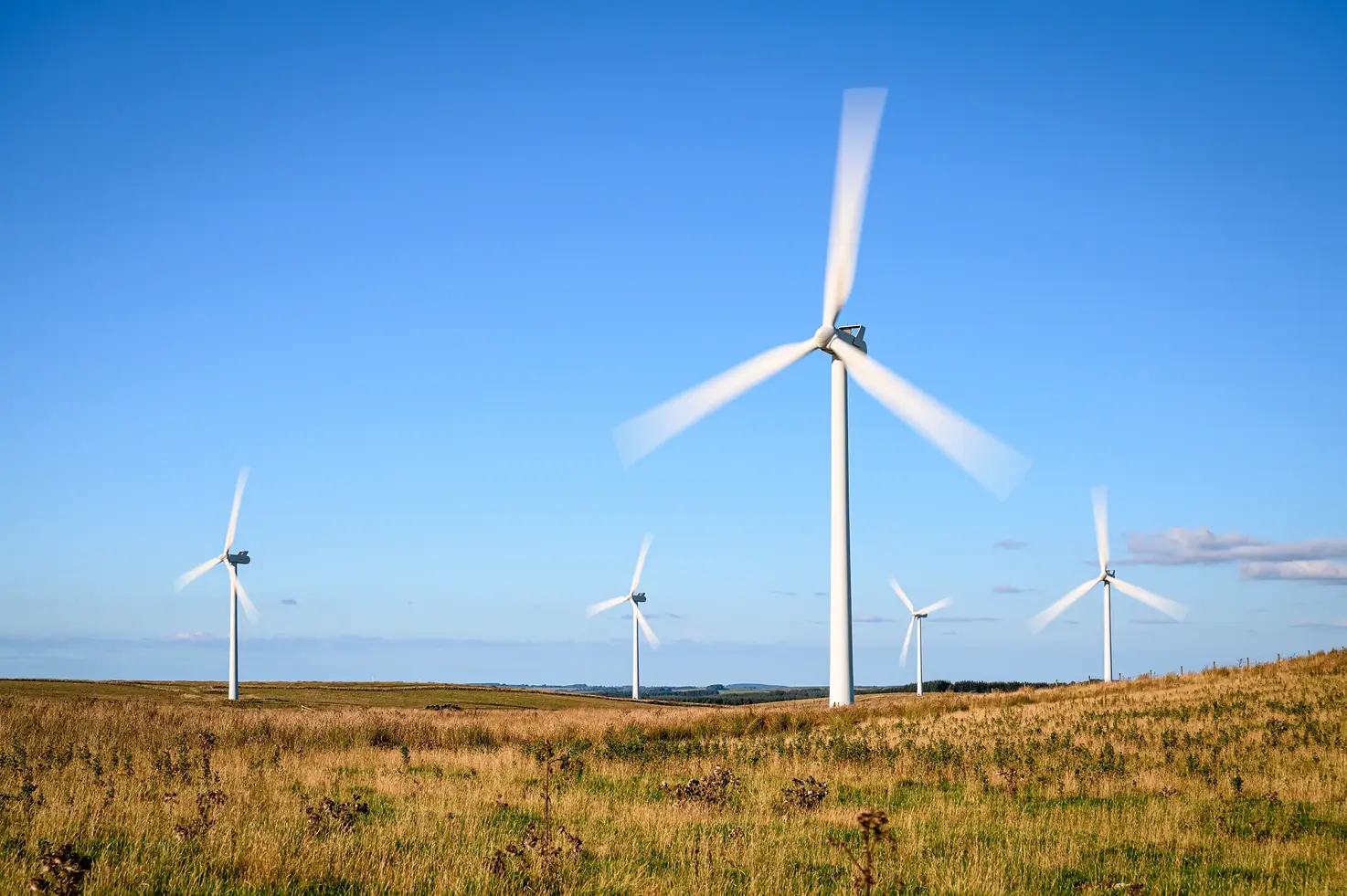Umberto Bizzaro, Market Manager - Sustainable Energy, Tensar, and Logan Black, Principal Manager – Strategic Partnerships (Onshore Wind), EDF Renewables
16/10/2025 | Onshore wind



From moratorium to momentum: assessing the outlook for onshore wind
16 October 2025
Since the de facto onshore wind ban was lifted in England in July 2024, it’s been really positive to see projects entering into the planning process, with Scout Moor 2’s application hopefully the first of many. Onshore wind projects take considerable time to develop, often requiring at least two years’ worth of surveys, so we had not been expecting the floodgates to open immediately and we expect more projects to follow in due course.
The reforms to the Contracts for Difference (CfD) scheme, arriving with Allocation Round 7 (AR7), have introduced positive steps such as extending their duration from 15 to 20 years, which will bring further revenue certainty to developers and encourage deployment of more generating assets like onshore wind.
The onshore sector is an exciting place to be at the moment, with a good deal of supportive policy, but we should not forget that this is set against a challenging wider macroeconomic environment, one which is causing uncertainty amongst investors. Furthermore, current grid connection delays hinder certain onshore projects from delivering, and solutions such as further storage flexibility would be very welcome to provide an alternative and alleviate the issues faced with the delays, whilst ensuring a project is bankable and can therefore go ahead.
Scotland driving progress
Reading EnergyPulse’s recent Onshore Wind Pipeline Report, it becomes clear how central Scotland is to the UK’s onshore ambitions. It currently accounts for 74% of built or yet to be built pipeline, with this capacity expected to double from 8.2GW in 2020 to 16.8GW in 2030. This needs to align with NESO’s upcoming SSEP or we are at risk of not meeting our CP30 targets for onshore wind.
However, the report also emphasises the fact that planning is still taking considerable time, with Section 36 consents averaging around two and a half years for approval in Scotland, whilst DNS applications in Wales average around one and a half years. This is despite Scotland’s onshore wind sector deal including a commitment that the S36 process should take a maximum of one year.
In welcome news, co-location capacity grew 19% year on year to reach 19GW , with a forecasted 21% of onshore wind capacity commissioned to include storage by 2030. But again we see grid delays affecting approximately 20% of the unbuilt capacity, with 12% of the unbuilt onshore wind project pipeline delayed by over one year, which may affect deployment and developer confidence.
Focus on delivery
Attending RenewableUK’s recent Onshore Wind Conference in Edinburgh, we saw the progress that has been made since the sector deal clearly highlighted, headlined by the Onshore Wind Industry Taskforce delivering its strategy.
The conversations on the (sold out!) floor were focussed firmly on delivery and how projects are going to reach operational status. Key to unlocking this will be NESO’s Strategic Spatial Energy Planning, which is expected to be published in Q4 of 2026 and will provide a pathway for electricity and hydrogen generation and storage types, locations, capacities, and timings. This will play a key role in providing certainty to developers, particularly regarding rising Transmission Network Use of System (TNUoS) charges, which cannot currently be structured into a power purchase agreement (PPA) with reasonable certainty beyond a five-year period, impacting the bankability of certain projects and effecting their timeframes.
The priorities of attendees also centred on repowering, given its potential to provide a preferable alternative to simply decommissioning end-of-life assets. However, more work needs to be done around the feasibility and identification of strategic projects to repower, including setting out how this ties into Clean Power 2030 and beyond.
Looking ahead
In the year ahead, we are looking forward to observing decisive progress on the second Review of Electricity Market Arrangements (REMA), with zonal pricing now off the table allowing us to focus on reforming the national market to both make it fairer for consumers and enable the full benefits of a greater proportion of wind generation in our system.
Given the significant capacity growth expected in Scotland, with EnergyPulse projecting over 16.5GW to be operational at the end of 2030, which would account for 69% of the UK's onshore capacity, TNUoS reform needs to be an integral part of any next steps on REMA. The future role and design of TNUoS and NESO’s SSEP have to be taken forward together, in a fully integrated way, as fundamental components of a revised future national market. The SSEP will also allow development to accelerate in the identified key areas, subsequently allowing the supply chain to switch its focus to locations with higher likelihoods of projects taking being developed.
As for the role of RenewableUK’s Shadow Board, in addition to supporting the wider organisation, it is one of continued collaboration, alignment and new ideas to drive forward the key industry aspects required to bring us closer towards a fully decarbonised UK, with an acceleration in the pace of deployment of renewable energy projects, integrated into the existing energy mix to benefit the country economically, strategically and technologically. We should not simply plan to meet our CP2030 goals, but consider the optimal solutions today to facilitate a greener and cleaner tomorrow in the decades ahead.




